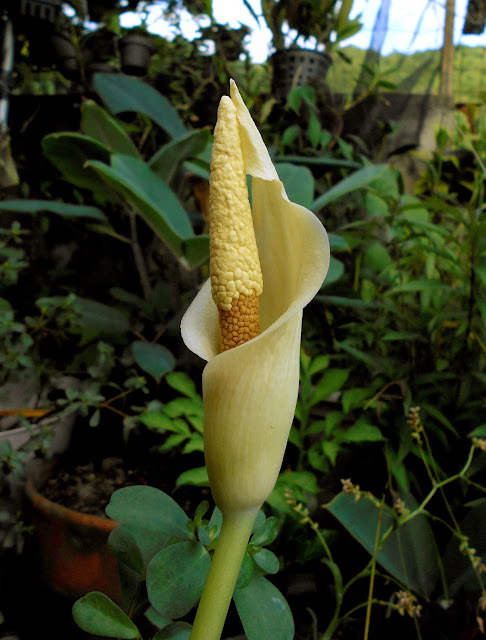Amorphophallus salmoneus x A. macrophyllus 'Bluto': Will you or will you not?

Today, the male flowers of Amorphophallus salmoneus began shedding pollen, coinciding with the receptivity of the female flowers of one of my many A. macrophyllus 'Bluto'. You know what that means. Frankly, I am not sure if this endeavor will 'take'. I always felt that the former genus Pseudodracontium (of which macrophyllus is a member of) is sufficiently distinct from Amorphophallus to stand as its own genus, which is another way of saying that there is a possibility that I just wasted my time. Of course, plants from two different genera can be artificially crossed, but there are many cases when they just won't. However, I am prepared to be surprised. And I want to be wrong. For those wondering why I think Pseudodracontium might be distinct from Amorphophallus , the answer lies in their more verrucate appendices AND the fact that contrary to most Amorphophallus , the inflorescences are synanthous. What the latter means is that the peduncles appea

